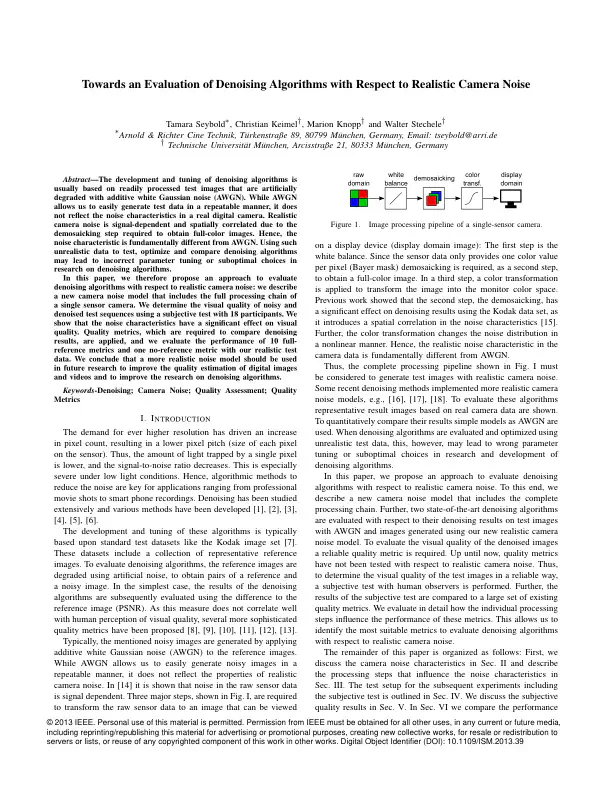
Abstract
The development and tuning of denoising algorithms is usually based on readily processed test images that are artificially degraded with additive white Gaussian noise (AWGN). While AWGN allows us to easily generate test data in a repeatable manner, it does not reflect the noise characteristics in a real digital camera. Realistic camera noise is signal-dependent and spatially correlated due to the demosaicking step required to obtain full-color images. Hence, the noise characteristic is fundamentally different from AWGN. Using such unrealistic data to test, optimize and compare denoising algorithms may lead to incorrect parameter tuning or sub optimal choices in research on denoising algorithms. In this paper, we therefore propose an approach to evaluate denoising algorithms with respect to realistic camera noise: we describe a new camera noise model that includes the full processing chain of a single sensor camera. We determine the visual quality of noisy and denoised test sequences using a subjective test with 18 participants. We show that the noise characteristics have a significant effect on visual quality. Quality metrics, which are required to compare denoising results, are applied, and we evaluate the performance of 10 full-reference metrics and one no-reference metric with our realistic test data. We conclude that a more realistic noise model should be used in future research to improve the quality estimation of digital images and videos and to improve the research on denoising algorithms.